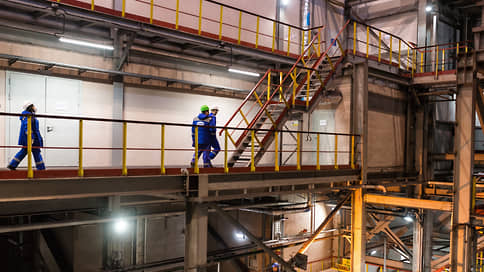NLMK sold high-quality plants in the Kaluga region and the Urals to structures of the owner of IMH
[ad_1]

NLMK sold its high-quality factories in the Kaluga region and the Urals to structures associated with the owner of IMH Evgeny Zubitsky. Analysts estimate the deal at 60 billion rubles, which NLMK will be able to spend on strengthening its position in the domestic market. Experts note that NLMK’s varietal division did not have synergy with the company’s main site in Lipetsk. IMH, in turn, deepens integration, gaining the opportunity to supply its cast iron for the production of higher processing.
NLMK Vladimir Lisin (MOEX: NLMK) sold varietal assets. According to the Unified State Register of Legal Entities, NLMK-Kaluga LLC (owns NLMK-Sort LLC and NLMK-Metiz LLC) and Vtorchermet NLMK LLC changed owners on September 6 – they became the structures of the owner of the Industrial Metallurgical Holding (IMH) Evgeniy Zubitsky . According to Kommersant’s information, the deal also included NLMK’s Ural high-quality assets. The parties do not comment on the deal.
NLMK has repeatedly put up high-quality assets for sale. The contender for them was the Novostal-M company of Ivan Demchenko, which, according to its own reporting, made an advance payment of 4.8 billion rubles. However, Novostal-M subsequently withdrew from the negotiations.
NLMK-Kaluga is an electrometallurgical plant with a capacity of 1.5 million tons of steel and 0.9 million tons of rolled steel per year. NLMK-Ural production sites are located in the cities of Revda (electric steelmaking production), Nizhnie Sergi and Berezovsky (long-rolling production). Their capacity is 2 million tons per year. NLMK Group’s share of the Russian valve market was 18%.
According to My Investments analysts, at current steel prices and the ruble exchange rate, the fair value of NLMK’s long-rolling business is RUB 60 billion. “Thus, based on recent estimates of the transaction in the media (they wrote about the possible transaction amount of 75–100 billion rubles), the premium for the company over the fair price could be about 15–40 billion rubles. from the sale of assets (1.5–4% of NLMK’s current market capitalization),” they wrote.
Senior analyst at Sinara investment bank Dmitry Smolin estimated the deal at 40-50 billion rubles. on a debt-free basis.
The IMH perimeter includes assets for the production of pig iron, coke, mining and processing of coking coal and iron ore. The holding itself is one of the world’s largest exporters of commercial pig iron. The main shareholder of IMH, Evgeny Zubitsky, already owns the Tula-Steel metallurgical plant with a capacity of 1.5–1.8 million tons of long products, and a deal with NLMK can strengthen the position of his companies in the downstream. At the same time, this year IMH decided to get rid of one of its raw materials assets by selling the Titov coal mine – the Magnitogorsk Combine became the buyer. The transaction amount could be 22 billion rubles.
NLMK is a vertically integrated steel producer, and the key products are slabs and flat products, and from this point of view, there was no synergy between the company’s main site in Lipetsk and its long sections division either in terms of raw materials or in terms of the final product, says the director of business development and consulting practice Metals & Mining Intelligence Ilya Kolomeets.
“This has long been a trend when large metallurgists sell high-quality assets: several years ago Severstal sold the Balakovo plant with a capacity of 1 million tons,” the expert notes.
In his opinion, NLMK can invest the proceeds from the transaction into the development of trading, which is especially important in the context of deteriorating export opportunities. In addition, any manufacturer faces the task of improving product quality.
IMH specializes, among other things, in the production of cast iron, which it can use as raw material for acquired long-range assets, partially replacing purchased scrap, says Mr. Kolomeets. Secondly, he continues, the holding receives assets located close to large construction markets, which are the main consumers of reinforcement.
[ad_2]
Source link





